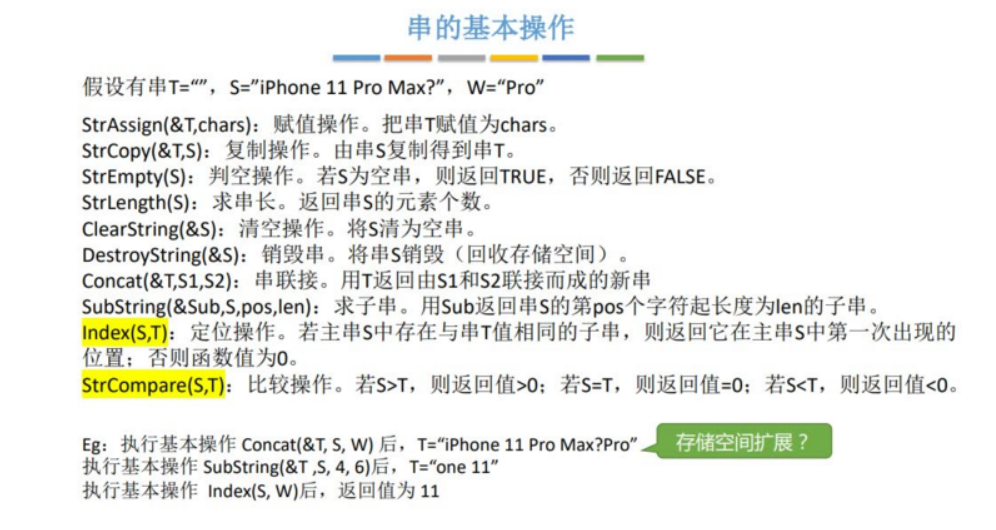1
2
3
4
5
6
7
8
9
10
11
12
13
14
15
16
17
18
19
20
21
22
23
24
25
26
27
28
29
30
31
32
33
34
35
36
37
38
39
40
41
42
43
44
45
46
47
48
49
50
51
52
53
54
55
56
57
58
59
60
61
62
63
64
65
66
67
68
69
70
71
72
73
74
75
76
77
78
79
80
81
82
83
| #include <stdio.h>
#include <string.h>
#define Maxlen 255
typedef struct {
char ch[Maxlen];
int length;
}SString;
void InitString(SString& S) {
strcpy_s(S.ch, "abcdefghijk");
S.length = 11;
}
void SubString(SString S, int pos, int len) {
if (pos + len - 1 > S.length)
{
printf("越界了");
}
else
{
printf("从字符串%s的第%d位开始取%d位的结果为:", S.ch, pos, len);
for (int i = pos - 1; i < pos - 1 + len; i++)
{
printf("%c", S.ch[i]);
}
}
}
bool SubString(SString& Sub, SString S, int pos, int len) {
if (pos + len - 1 > S.length)
{
return false;
}
else
{
for (int i = pos - 1; i < pos + len - 1; i++)
{
Sub.ch[i - pos] = S.ch[i];
}
}
return true;
}
int StrCompare(SString S, SString T) {
for (int i = 0; i < S.length && i < T.length; i++)
{
if (S.ch[i] != T.ch[i])
{
return S.ch[i] - T.ch[i];
}
}
return S.length - T.length;
}
int IndexString(SString S, SString T) {
int i = 0, n = S.length, m = T.length;
SString Sub;
while (i <= n - m)
{
SubString(Sub, S, i, m);
if (StrCompare(Sub, T) != 0)
{
i += 1;
}
else
{
return i;
}
}
return 0;
}
int main() {
SString S;
InitString(S);
SubString(S, 2, 4);
return 0;
}
|









